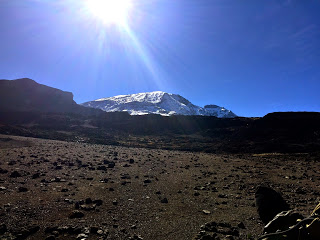As the Highest peak in Africa, Mt. Kilimanjaro always draws a lot of attention from trekkers and climbers alike. Many travel to Tanzania to nab one of the Seven Summits, while others are lured by the challenge that comes along with hiking to the iconic “Roof of Africa.” But no matter what reason you have for going, it is truly an adventure of a lifetime, and one that will leave a lasting impression for sure.
With that in mind, a blog called Altitude Treks has posted an article listing 19 Kilimanjaro Facts that offers some interesting insights into the mountain. Whether you’ve been there in the past, are planning in the future, or just want to know more about this amazing place, you’re likely to learn something that you didn’t know before about Kili.
I’ve to the mountain twice, and have written about it many times, and I still learned a few things from the story. For instance, the article goes into detail about the various climate zones you’ll pass through on the way to the summit, which total five in all. It also offers insights into the history of the mountain, including some of the earliest attempts to climb it.
You’ll also learn about the East African Mountain Club, which led early expeditions to the summit, and find out who the oldest and youngest summiteers are. You’ll discover how the mountain got its name, why certain areas on its slopes have their own monikers, and even gain insights into the death rate on the mountain.
According to the story, about 5-15 people die on Kili each year, with 2-3 of them being visitors and the rest porters. That number is relatively small when you consider thousands attempt the climb in any given year, with about 60% of those making it to the summit.
If you’re a previous Kili climber or have a trek to the mountain on your bucket list, you’ll want to give this article a look. It is fairly long, but a very interesting read for those of us who love this mountain. You can check it out by clicking here.
And thanks to Clare Groom for sharing the story
- Gear Review: The Xero Scrambler Mid is an Ultralight Hiking Shoe for Spring - March 1, 2023
- Gear Review: Yeti Roadie 48 Wheeled Cooler - August 18, 2022
- Kristin Harila Continues Pursuit of 8000-Meter Speed Record - August 16, 2022
